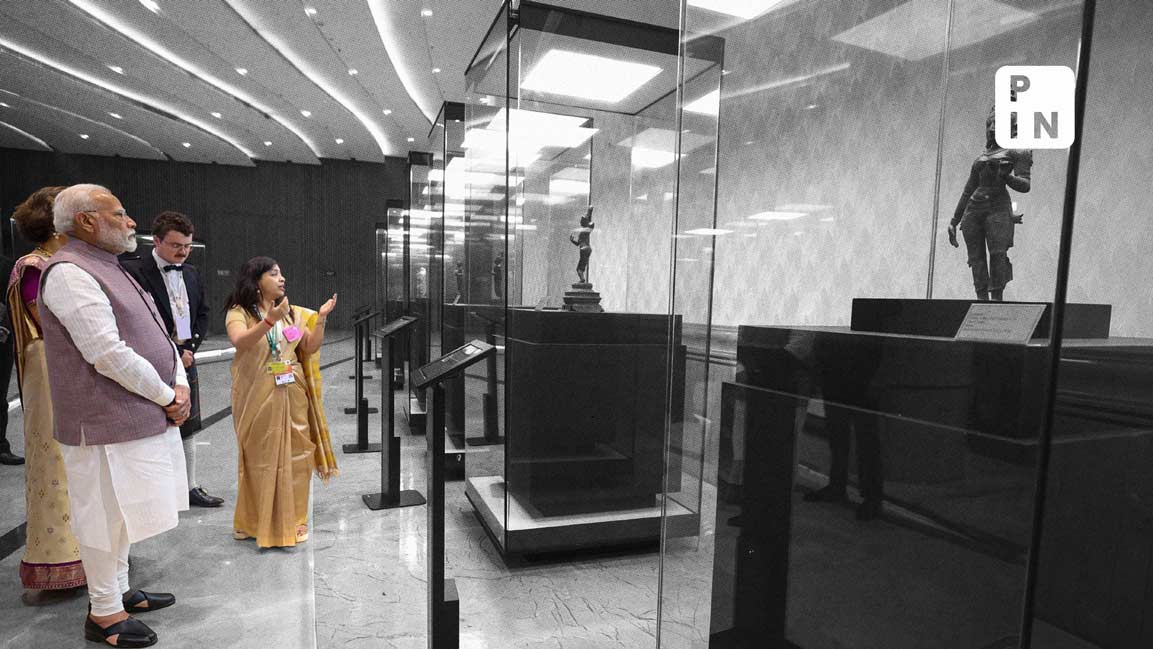- | 5:28 pm
Digital public infrastructure put India’s growth in the fast lane: Nilekani
Plans are underway to expand India’s digital public infrastructure model to 50 countries over five years, says the former UIDAI chairman

Digital public infrastructure (DPI) is India’s innovative model for inclusive growth, Infosys co-founder and former chairman of Unique Identification Authority of India (UIDAI) Nandan Nilekani said.
At the B20 Summit in New Delhi, Nilekani said digital transformation and DPI have sped up India’s financial inclusion in just nine years, a process that could have taken 47 years otherwise.
The B20 business forum is a gathering of business leaders from the Group of 20, or G20, nations to discuss global economic policies. DPI includes platforms, services, and technologies designed, built and maintained by the government to facilitate economic activity, enhance transparency, and improve the delivery of public services.
Nilekani said DPI is at the heart of the country’s economic growth, while pointing out that individual and indirect tax systems are entirely digital. India has a uniform toll collection system in FASTag, which is built by the roads ministry and accounts for 2.5 billion monthly transactions.
DPI is designed to integrate people into modern society by enabling them to easily open bank accounts, obtain mobile connections, and access other essential services, no matter their location. This approach is distinct for its collaborative and fair nature, grounded in the belief that everyone across the country should have equal opportunities, Nilekani said, adding that India was able to transfer $4.5 billion during the pandemic to the accounts of 160 million beneficiaries.
During the pandemic, when vaccination was needed, India launched the COWIN platform, which enabled 2.5 billion vaccinations in two years, allowing individuals to have their vaccine anywhere in India, with vaccination certificates being issued in real-time, Nilekani said.
Pointing to the fast adoption of the unified payment interface (UPI) ecosystem, Nilekani said UPI payments have grown from just 100,000 transactions a month in October 2016 to 9.66 billion per month now, with 350 million users currently on the platform.
“It took 75 years to reach 6-7 million point of sale (PoS) machines for merchant payments. But in just 3-4 years, 50 million merchants already use QR codes,” Nilekani said, while crediting UPI for the dramatic acceleration in adoption of the technology.
Nilekani said that in the past, culture and regulatory environment were different in each state; but now it is all one mega economy. “From being offline, informal, low productivity, multiple sets of microeconomies, India is now becoming a single, online, formal, and high productivity mega economy; and this trend will continue for the next 20 years,” he said.
DPI has enabled a newer approach to solving complex issues, extending the country’s capability to use digital technology at a population scale to transform society, while attributing the beginning of the platform to the launch of the unique identification system called Aadhaar
“Today, 1.3 billion Indians have a digital ID, which provides online identity authentication using fingerprint, iris, OTP, and face scans. That system is used for 80 million transactions daily, meaning 80 million times,” Nilekani said, adding that know-your-customer (KYC) was built on Aadhaar, which became sufficient to open a bank account or to get a mobile connection.
Nilekani said Prime Minister Narendra Modi initiated the Jandhan program in August 2014, creating the largest financial inclusion drive in the world with over 400 million new bank accounts. This rapid expansion was possible due to Aadhaar’s KYC features. Today, 700 million bank accounts are connected to Aadhaar, which is also employed in the country’s public distribution system.
Modi unveiled the Digilocker service in 2015, allowing Indians to digitally store important documents. Developed by the ministry of electronics and information technology, 180 million people now use Digilocker to store their Aadhaar IDs and vaccination records.
The same year also saw the introduction of digital signatures. By April 2016, Aadhaar enrollments hit 1 billion.
UPI and Jio, a mobile company that quickly garnered 100 million customers through e-KYC, were also launched that year. Vodafone and Idea also utilized e-KYC to expand their customer bases. Following the 2016 currency note withdrawal, there was a significant push for digital payments. Additionally, in 2016, the Reserve Bank of India introduced an account aggregator network.
Nilekani said India leverages transaction-generated data to bolster small businesses. As the world grapples with both demographic shifts and a 1.5-degree Celsius temperature increase, India stands as a young, democratic nation with vast potential. DPI can play a key role in climate adaptation efforts, possibly even facilitating pre-emptive financing for resilient housing, he added.
Thanks to its $250 billion IT sector, which employs five million people, and a rapidly growing startup landscape, India has seen a rapid digital transformation. From just 1,000 startups in 2016, the country now boasts 100,000 startups. This digital infrastructure model has gained international praise, with endorsements from Bill Gates to organizations like the IMF. Plans are now underway to expand this Indian DPI model to 50 other countries in the coming five years, Nilekani added.










